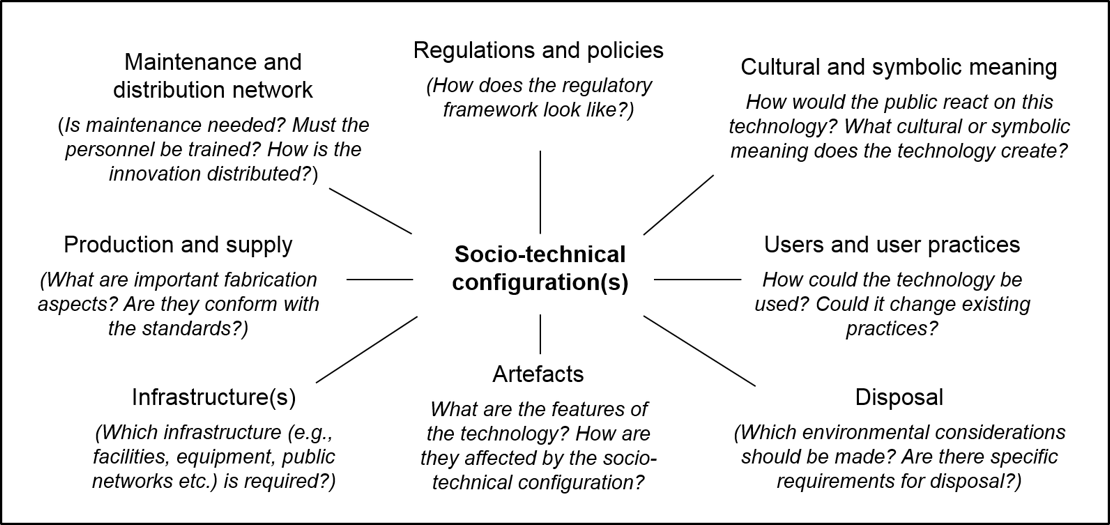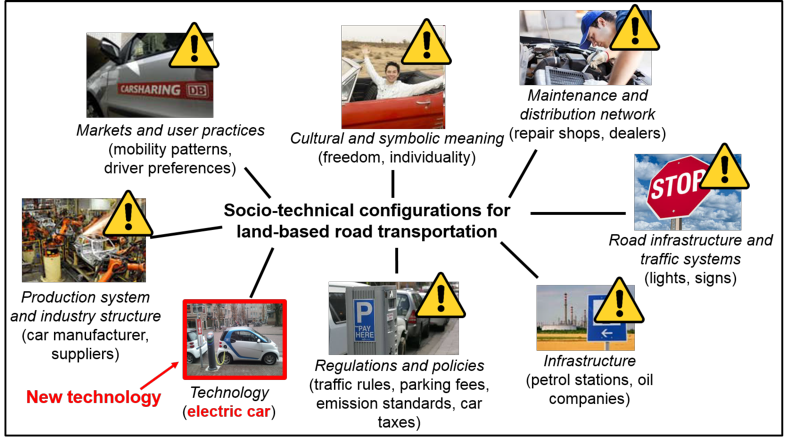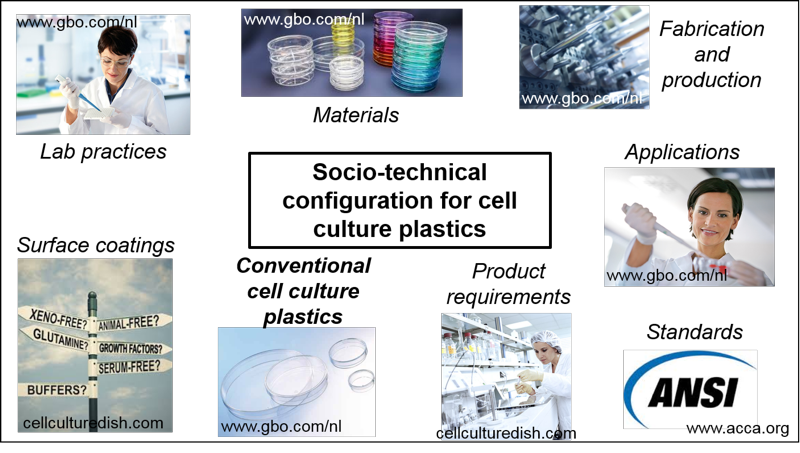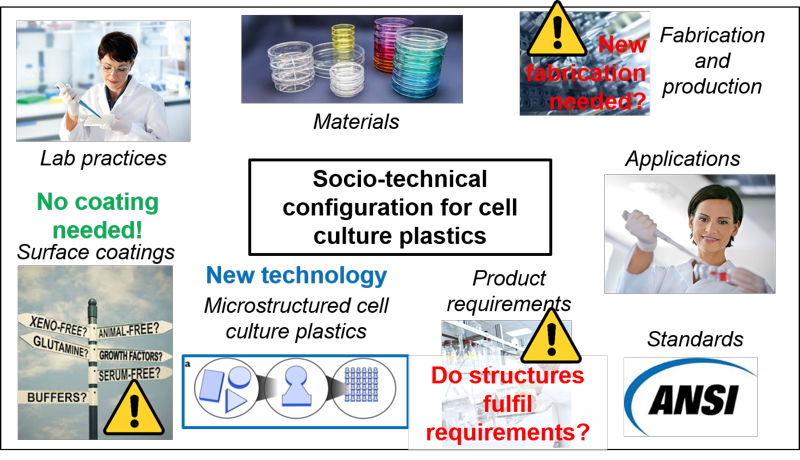Aim
For a technology to fulfill a particular function, not only technical aspects must be in place but also social elements should be considered. For example, for a transportation system to work in practice not only the core technology such as a car is essential, but also the (road and fuel) infrastructure, traffic rules, corresponding regulations, user practices, and its cultural meaning are important elements within the whole socio-technical system. The socio-technical configuration displays these linkages that are needed for a technology to be applicable in practice. Innovations, however, may induce changes in existing socio-technical configurations and therefore a dynamic picture forms (Geels 2006). Thus, this tool can also be useful for anticipating on possible broader changes which may come along with an innovation.

Practical considerations and implementation
Characteristics | Practical implementation |
|---|---|
Suggested time Short (hours/days) Level of difficulty Straightforward (but may vary with case) Materials needed Pen/Paper People involved Researcher (you), possibly others |
|
Examples
Car-based transportation
An example of such a socio-technical configuration has been published by Geels where he discusses car-based transportation and the configurations required for proper functioning of the technology in a socio-technical environment (Geels 2005).

The introduction of a new technology can have an impact on the existing system, as shown below. If the regular car is replaced by an electric car, also the production system needs to be adapted, the infrastructure must be changed to implement charging stations, and user practices or mobility patterns might vary. The reflection on necessary changes and upcoming challenges can be supported by the socio-technical configuration.

Micro-structured cell culture plastics
Such a socio-technical configuration can also be drawn for a technical research project. A PhD student, who was creating micro-structures for cell culture plastics, compared the technology he developed with standard products on the market. Conventional cell culture products have a flat surface which is not comparable to the in vivo situation. To improve cell culture, the PhD student and his colleagues created micro-structures on the surface of cell culture products and were able to achieve an increase in culture yield for iPS (induced Pluripotent Stemcells) cells (Reimer 2016). Based on the paper of Geels, he mapped the socio-technical configuration of conventional cell culture plastics, as shown below and as described in his thesis (Hulshof 2016).

In a next step, he compared which advantages or challenges are expected when the standard technology is replaced with a new innovation. An advantage of the micro-structured plastics is that additional coatings to increase cell attachment are not needed due to the structured surface, which eliminates the use of expensive materials and reduces handling steps. Potential challenges are foreseen for the product requirements and for the fabrication and production. Cell culture plastics have certain requirements, for example they must be sterile, which is also important for new products. Additionally, for the new technology it is important that the shape of the micro structures are reproducible to ensure a high product quality and functionality. For the fabrication, cell culture plastics are currently produced by injection molding while the microstructures are created by hot embossing. This difference in fabrication is expected to be the most critical challenge for the new innovation. Next to these advantages and challenges, no change is anticipated for the materials or outer dimensions (ANSI standards) which are kept the same.

After discussing this socio-technical configuration with a culture plastic manufacturer it turned out that the fabrication might indeed be the largest challenge. The fabrication of new molds would be too expensive for the relatively small market that is envisioned for the micro-structured products. The interviewee suggested however that alternatively an inlay with microstructures could be produced that is compatible with the conventional products.
Relevant literature
- Geels, F.W., 2006, Co-evolutionary and multi-level dynamics in transitions: The transformation of aviation systems and the shift from propeller to turbojet (1930–1970). Technovation, 26(9): p. 999-1016.
- Geels, F.W., 2005, The dynamics of transitions in socio-technical systems: A multi-level analysis of the transition pathway from horse-drawn carriages to automobiles (1860–1930). Technology Analysis & Strategic Management, 17(4): p. 445-476.
- Reimer, A., et al., 2016, Scalable topographies to support proliferation and Oct4 expression by human induced pluripotent stem cells. Scientific Reports, 6: p. 18948.
- Hulshof, F., 2016, Topochip: Technology for instructing cell fate and morphology via designed surface topography, PhD thesis, University of Twente: Enschede, The Netherlands.
